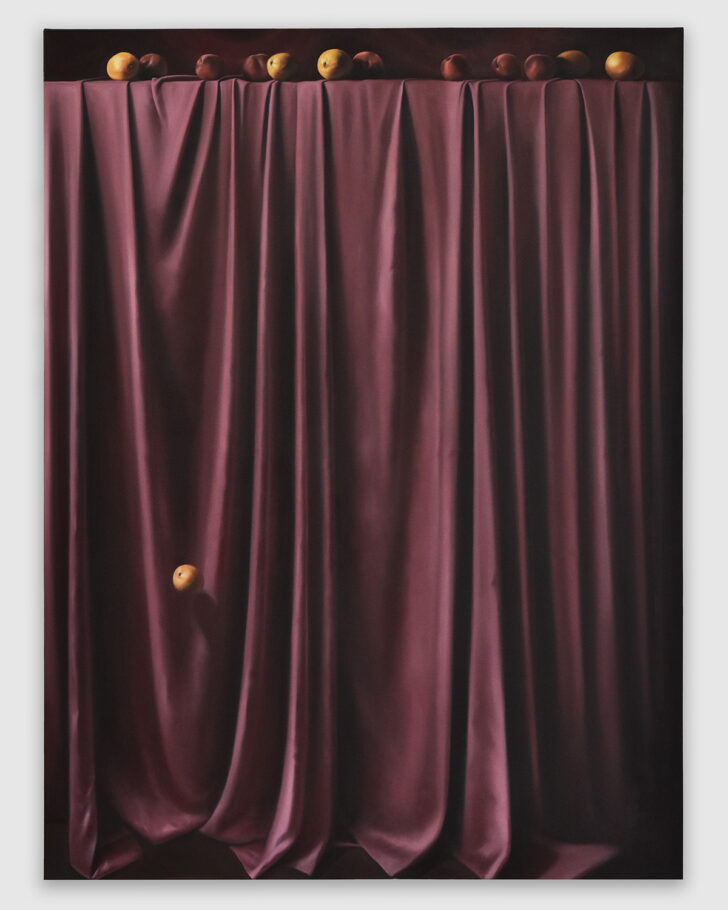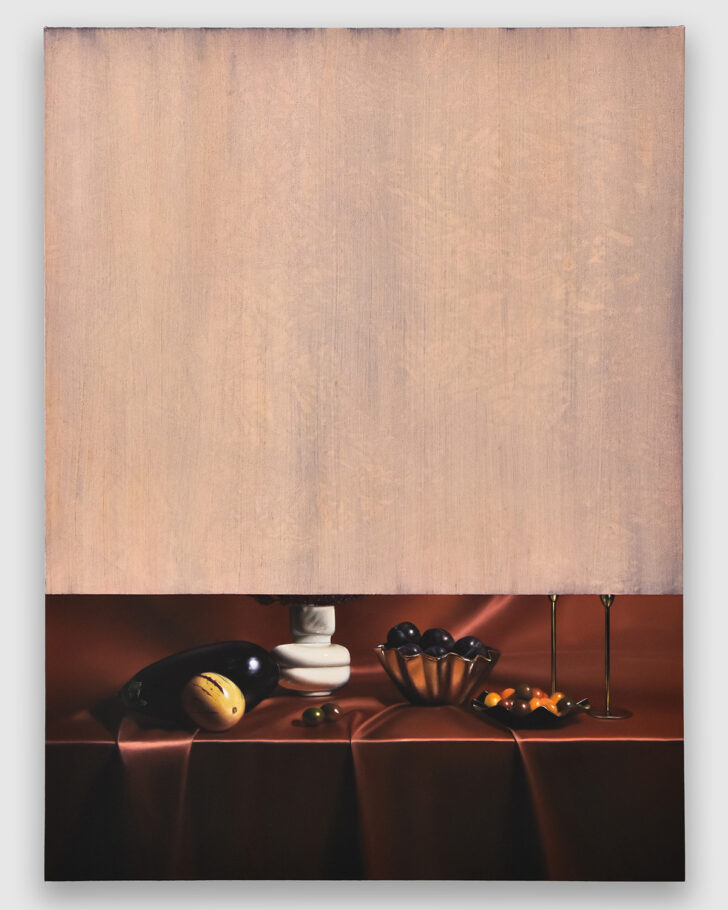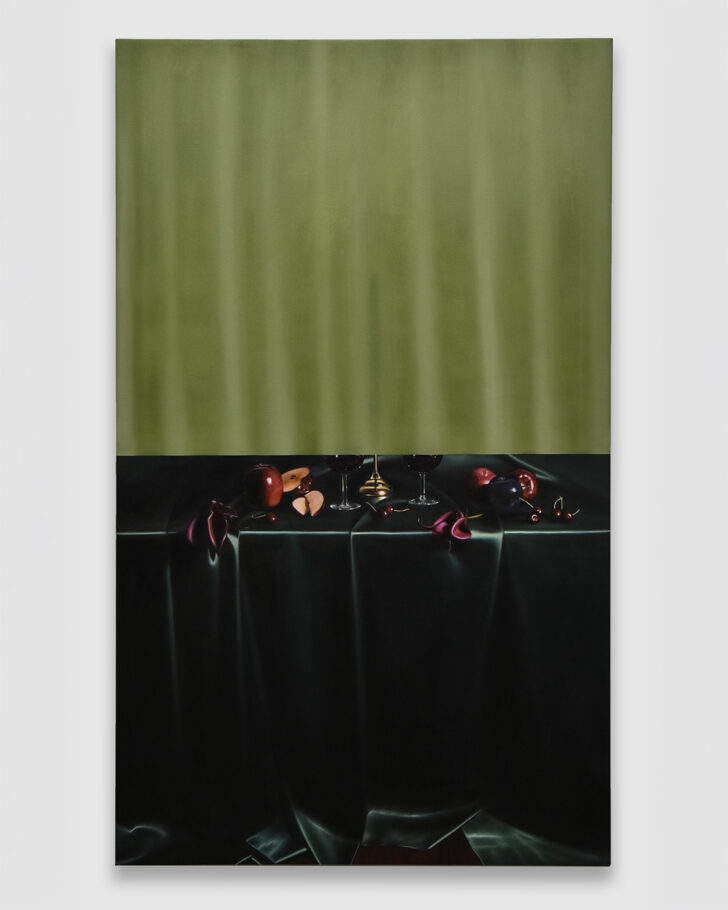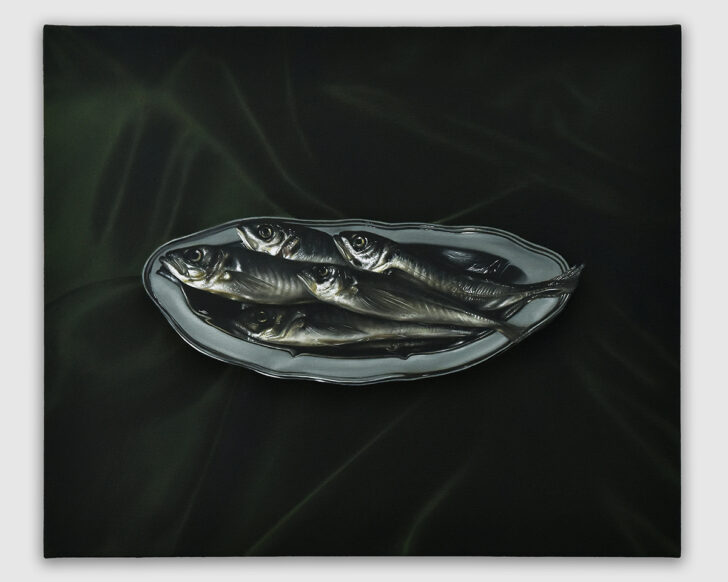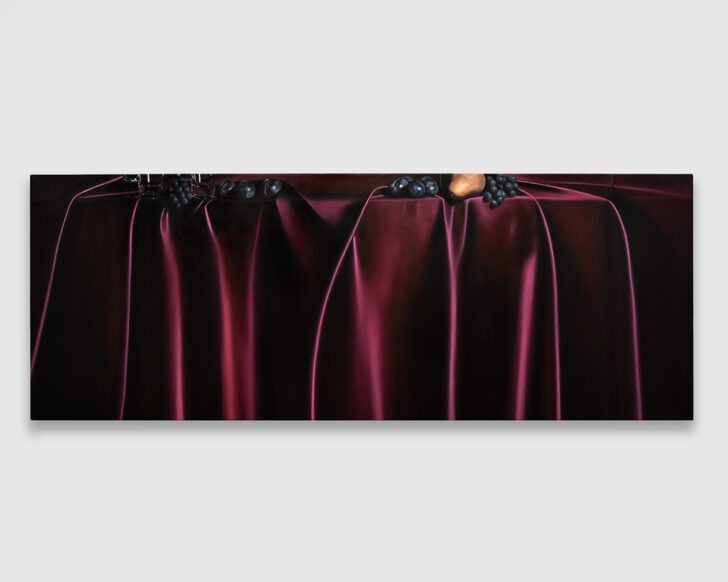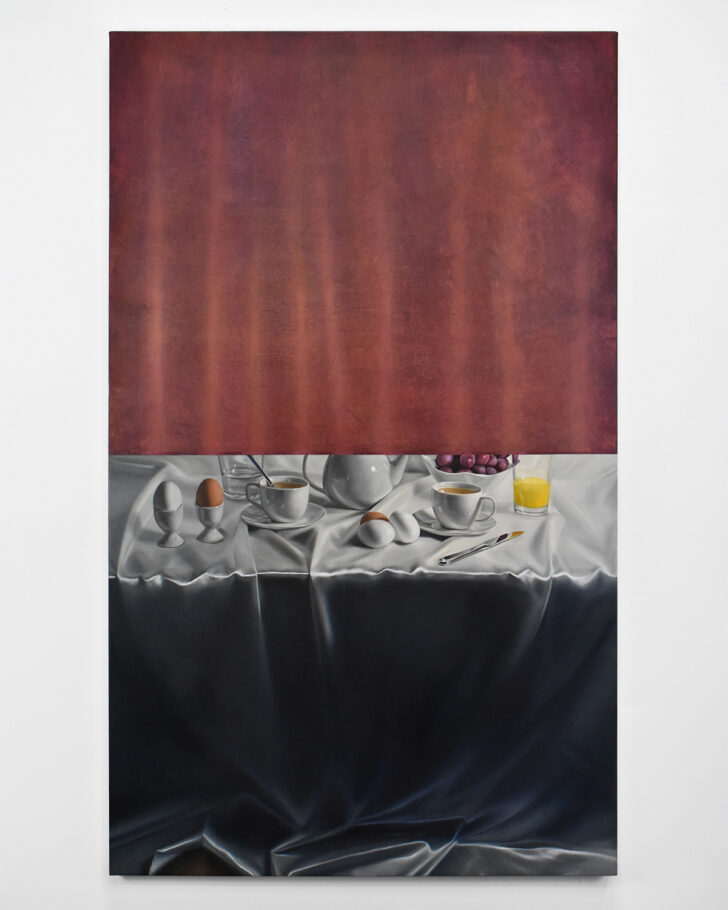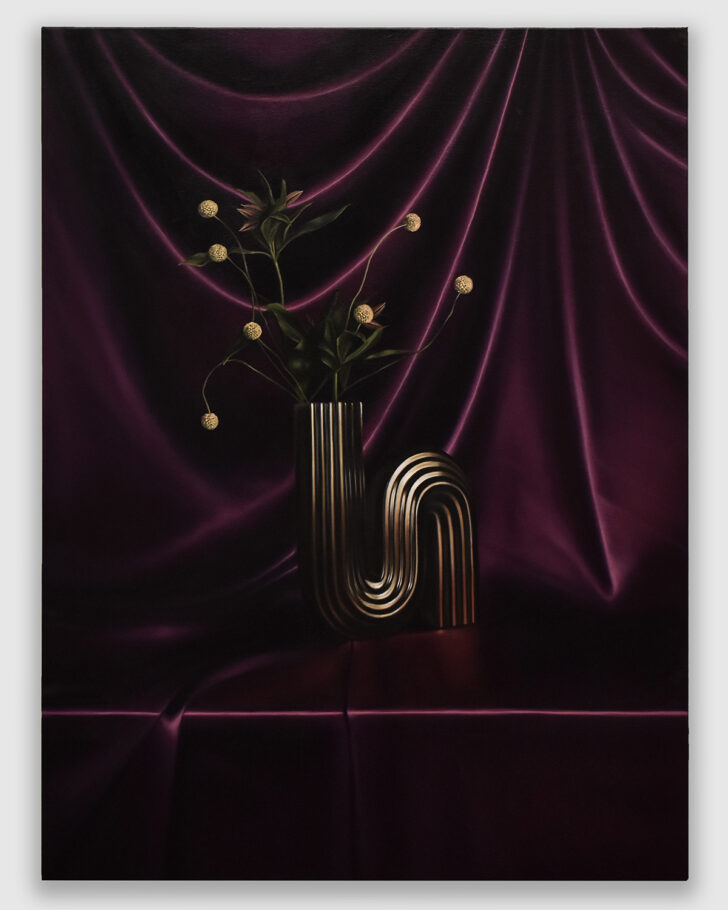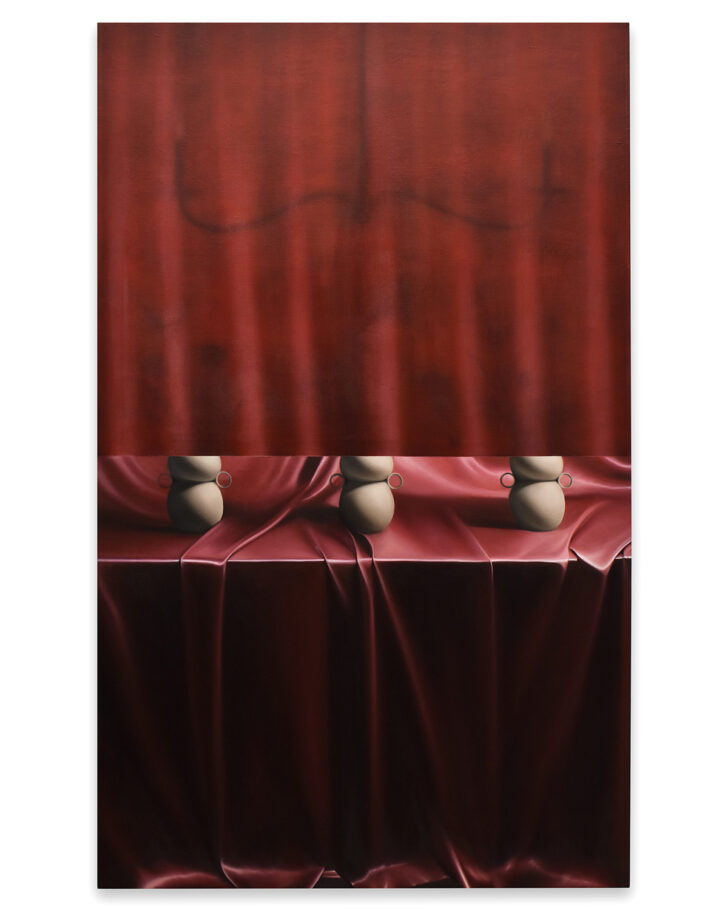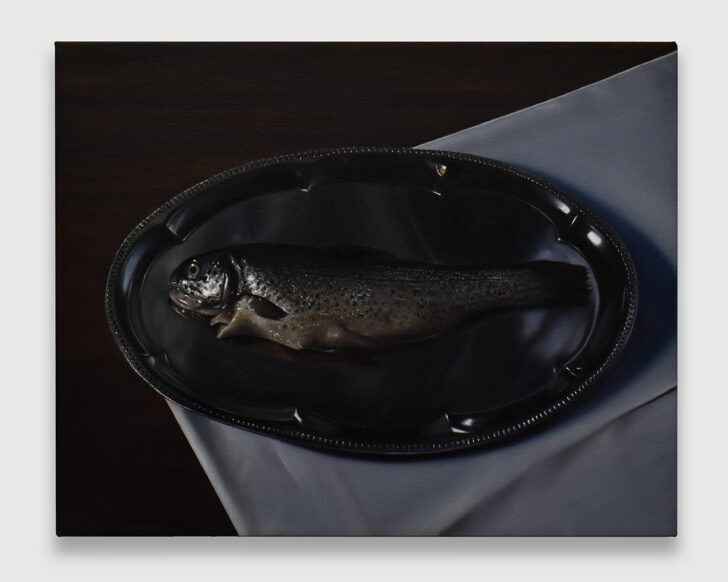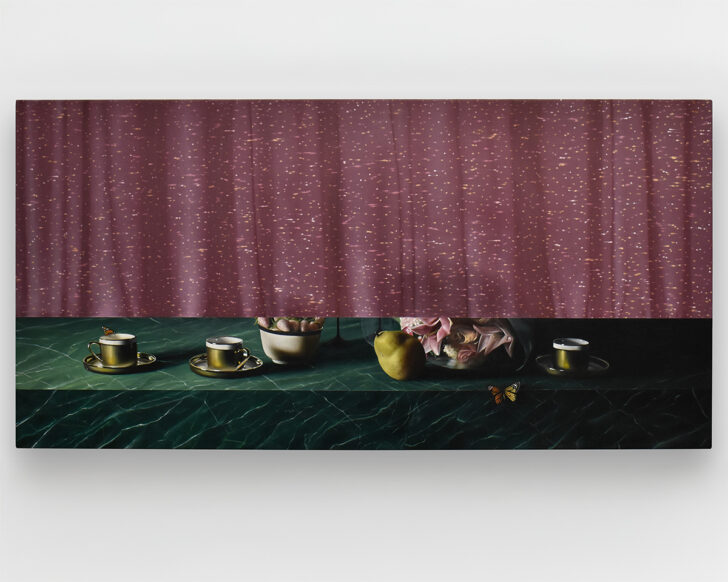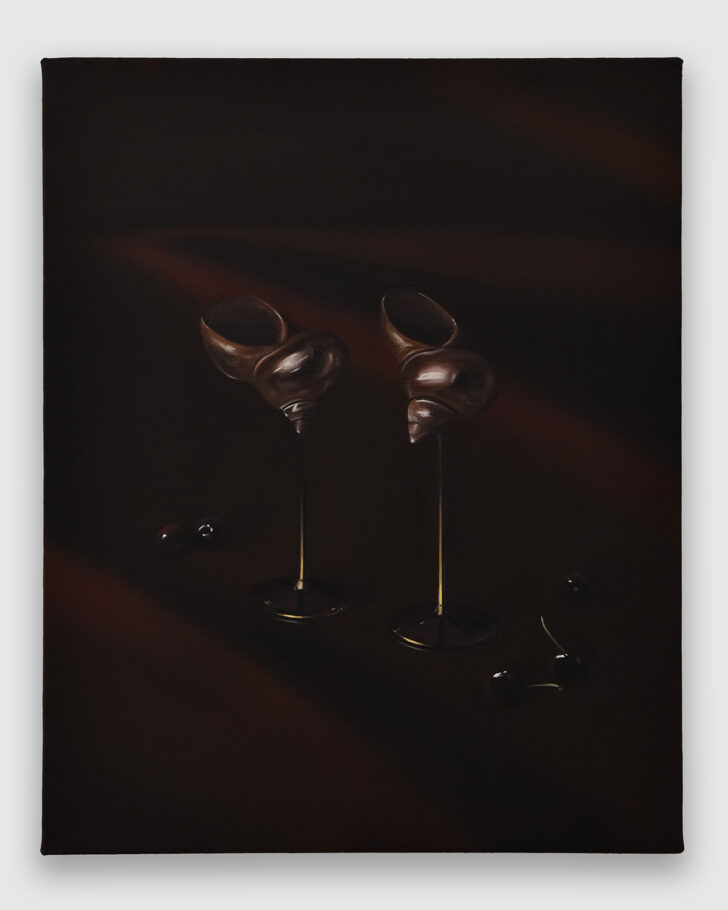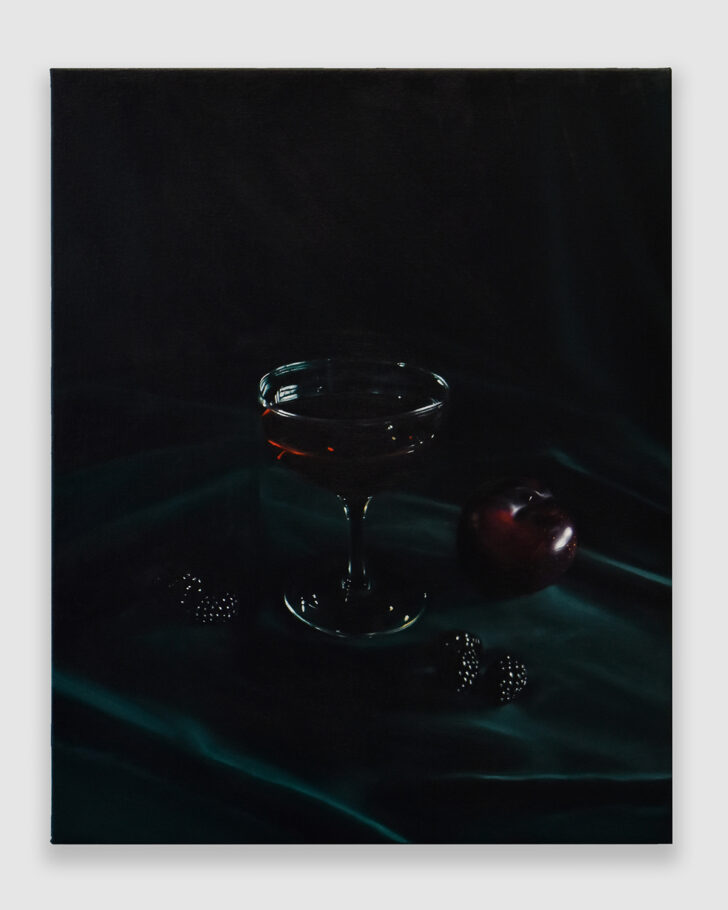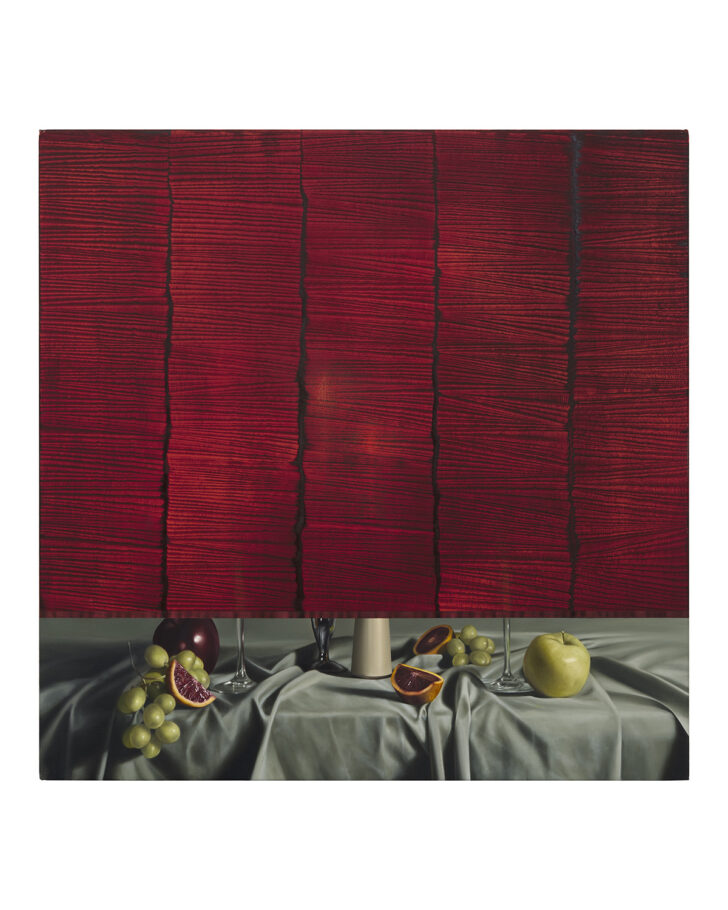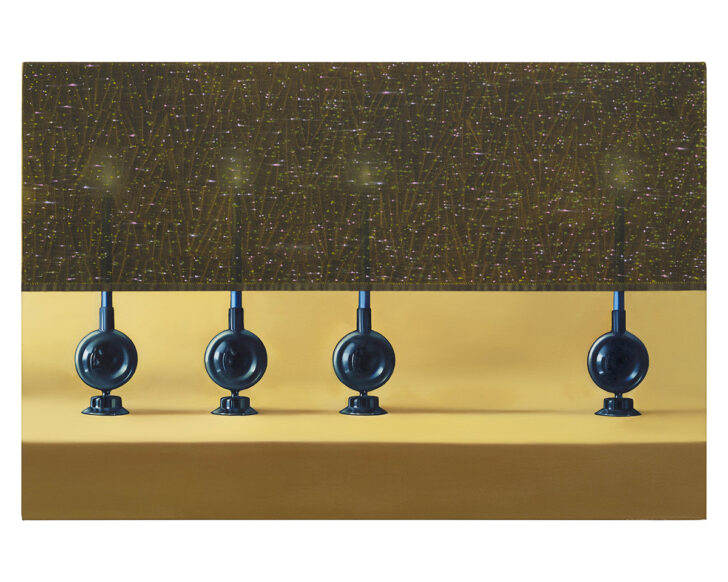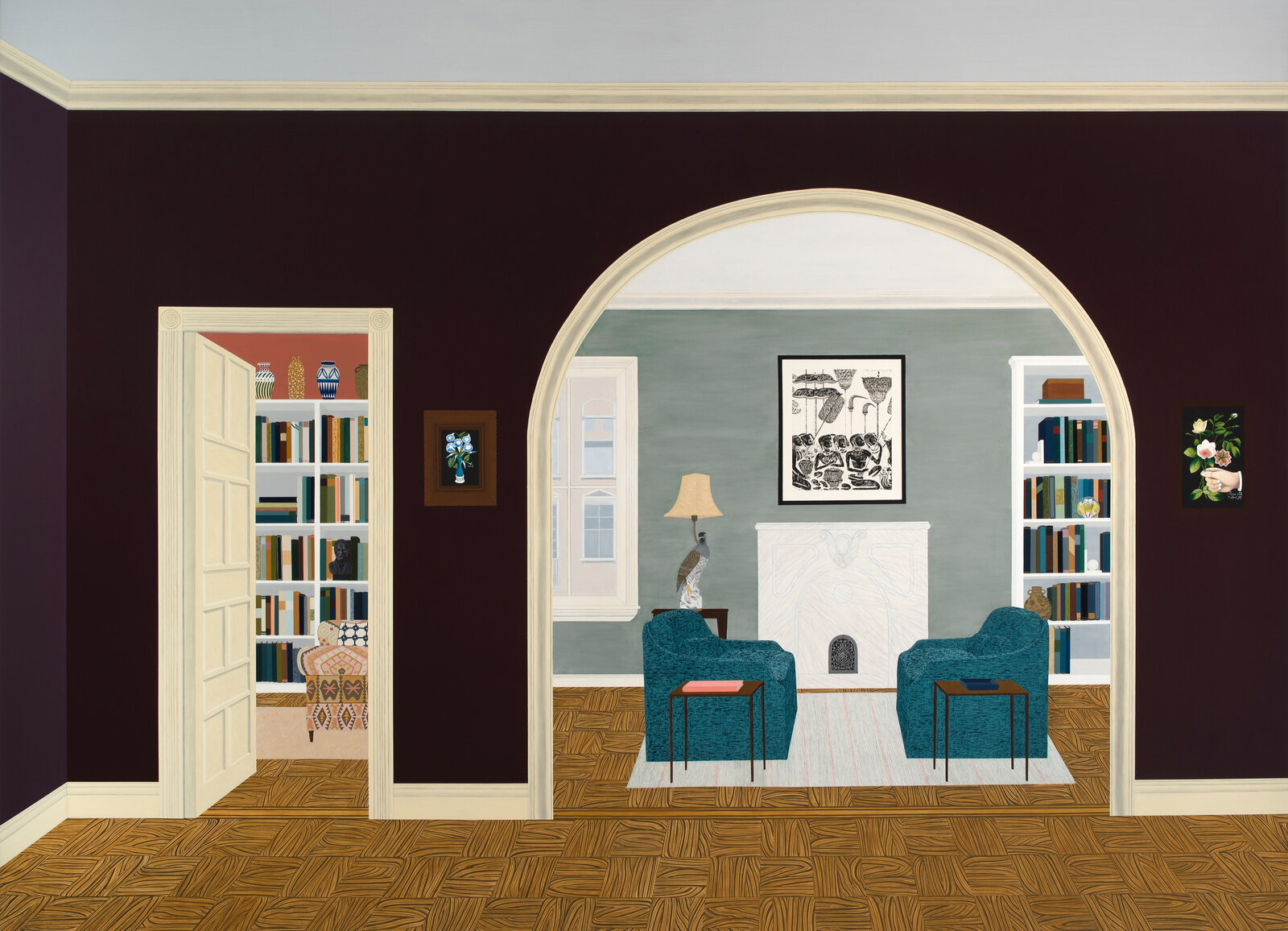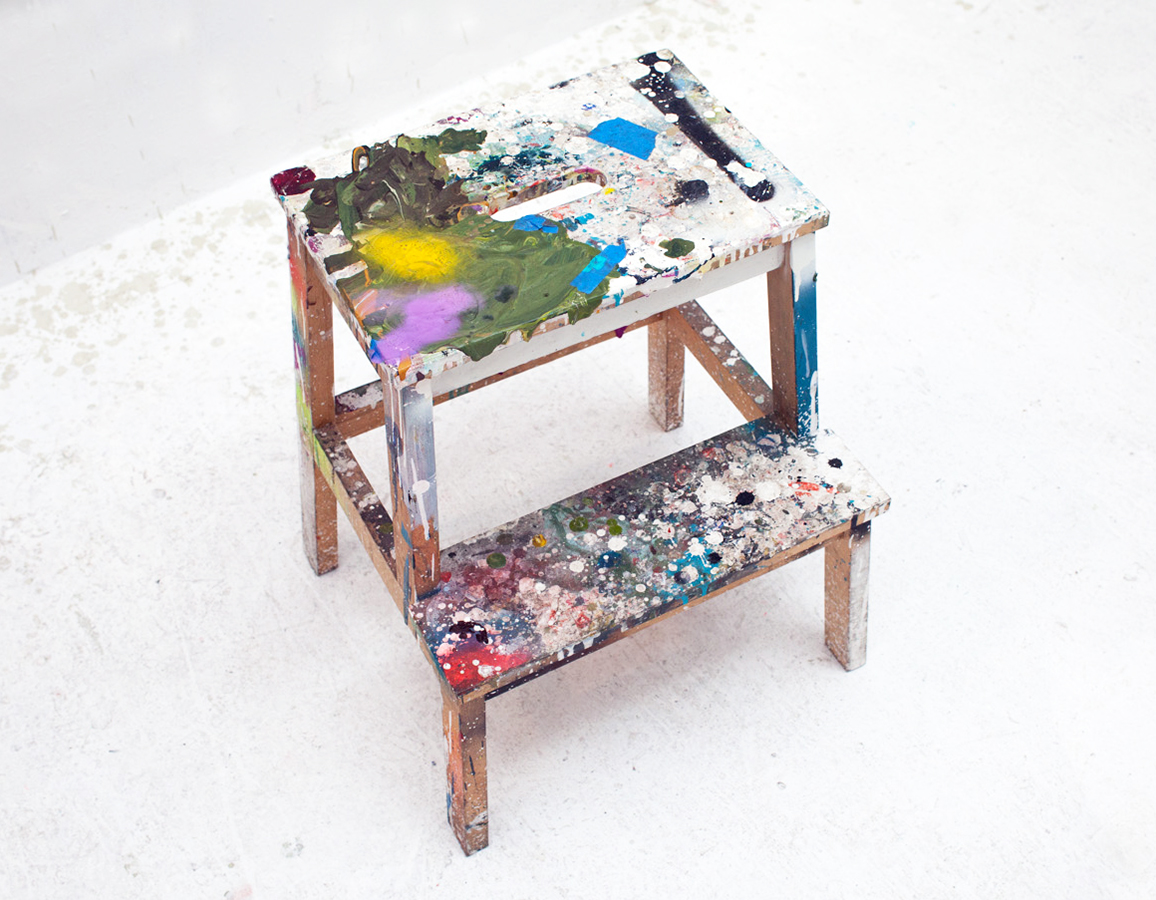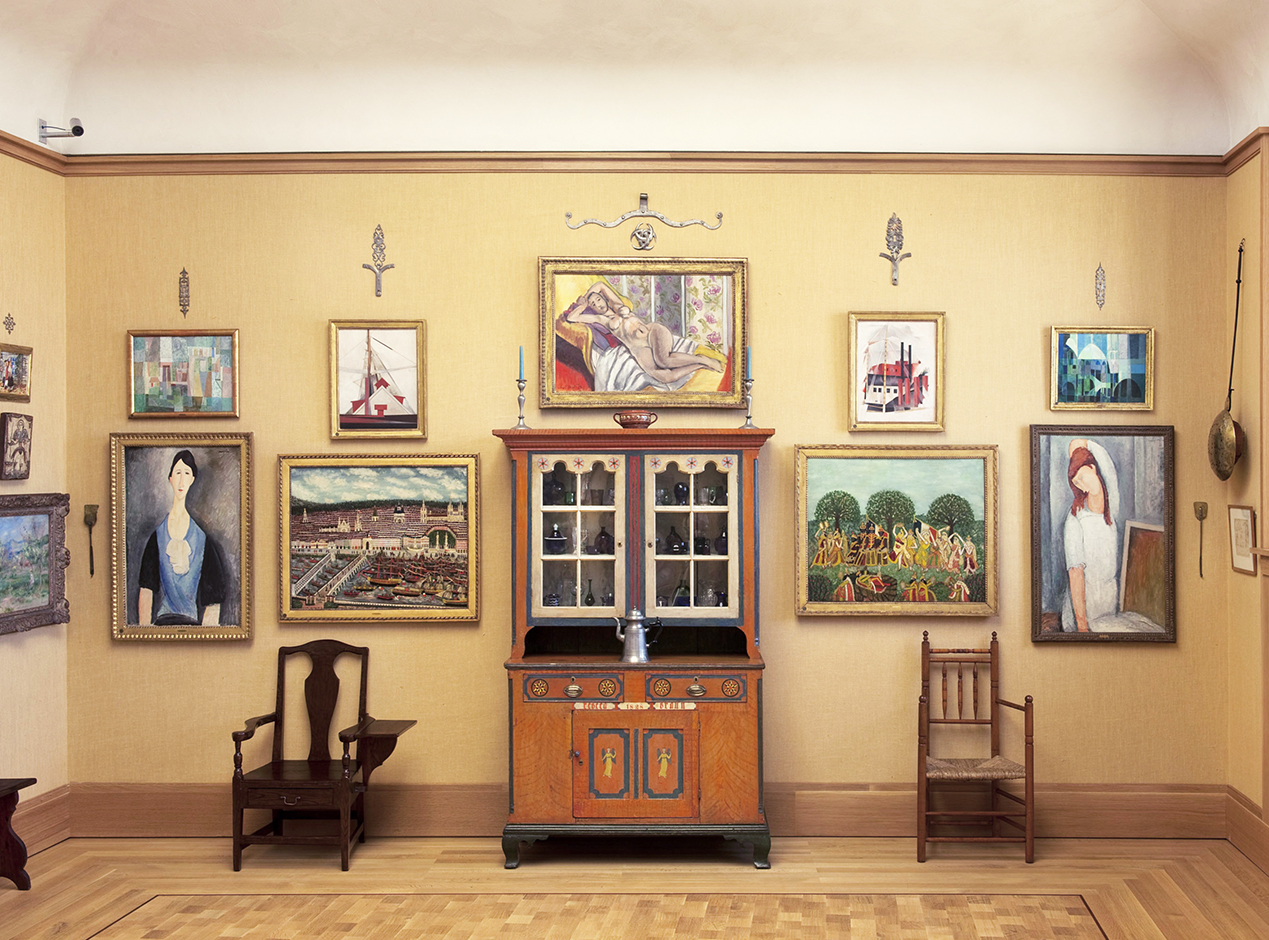
06.20.25
Sighted
Danielle Fretwell’s Veiled, Jewel-Toned Still Life Paintings Both Conceal and Reveal
In New Hampshire-based artist Danielle Fretwell’s still life paintings, what is visible is often just as important as what is obscured. Fretwell’s work first caught our eye at NADA New York last month; presented by London-based Alice Amati gallery, Fretwell’s seductive, hyperrealistic oil on canvas works featuring fruit, fish, candles, vases, and other tableware stood out among the over 120 booths at the bustling art fair. Depicting these items on what appears to be silken table linens or velvety drapery, Fretwell often includes the device of a painted veil or screen to obscure part of the composition.
Speaking to me over Zoom from the Long Meadow artist residency in the Berkshires —away from her husband and two dogs, isolated in nature — Fretwell was relishing the opportunity for seclusion, silence, and reflection. Her paintings have a similar sense of isolation and stillness, even while they are replete with sumptuous textures and compositional intricacies. Waxy pears, blackberries and other fruits gleam with perfection against the precisely depicted pleats of cascading navy drapery in Between Need and Gift (2025). “There’s a level of strangeness in these hyper polished objects,” acknowledges Fretwell. Trained in an academic, classical style, Fretwell does not deny that there is a nod to the Old Masters in her still life paintings. However, while the European masters of the 17th and 18th centuries often included a touch of rot and reality in their vanitas paintings — a fly alighted on a peach, a partially eaten loaf of bread, a turned over chalice, all to remind viewers of fleeting time, the fragility of life, and futility of worldly possessions—a sense of unchanging flawlessness pervades Fretwell’s scenes. “I’m not interested in decay. The whole point is this frozen state of perfection.”
Fretwell’s process begins with assembling actual objects in her studio. If the objects have a longer shelf life, she will simply paint from the scene before her. The inclusion of fish or more perishable goods, however, necessitates taking a photograph and painting from the documentation of the scene. The Spectators (2025), for example, features five glinting mackerel splayed on a platter with eyes agog, seeming to ask whether we are staring at them or the other way around. Once the scene is painted, Fretwell will sometimes decide on a portion to obscure. “It’s important that the viewer knows there is something underneath the veil,” concedes Fretwell. Why take the time to fully paint the scene, if only to paint over it? “I find it to be necessary that there is something that lies behind the veil, that the maker is being honest.” Citing the photorealistic works of Gerhardt Richter, which he sometimes blurred or marred in an effort to grapple with concepts of doubt and truth, Fretwell embarks on a similar discourse of illusion and honesty in her work.
To create her thinly layered painted veils, Fretwell places her canvases on the floor, applying paint using bedsheets and Plexiglass, and applying bodily pressure. For Fretwell, whose practice is rooted in the classical with an emphasis on control and precision, this part of her process takes an inadvertent turn towards abstraction, spontaneity, and unpredictability.
The image of a curtain or veil conjures a stage, or theatricality, but for Fretwell, obfuscation is about control: “Some people see the veil as being removed or opening. I actually envision the curtain closing or dropping.” She is currently working on a solo show with Alice Amati gallery, where she will debut a large-scale painting, the biggest piece she has ever worked on. For this exciting young artist, the stage is hers, and we are watching.
